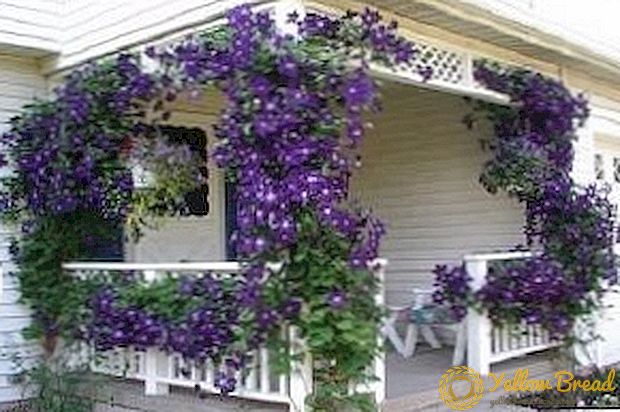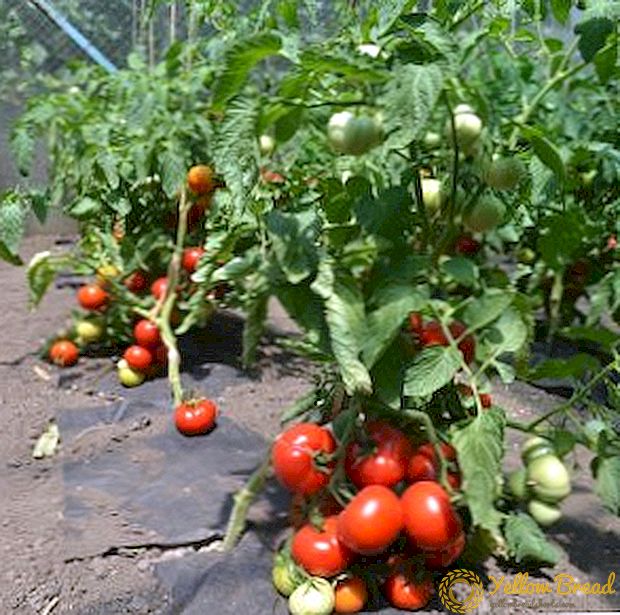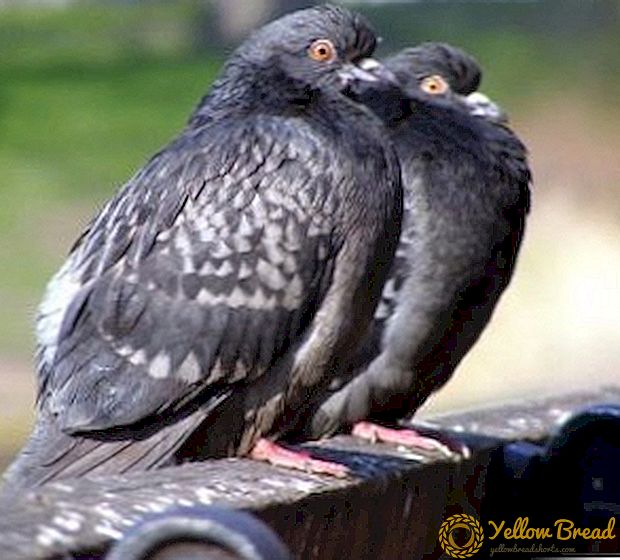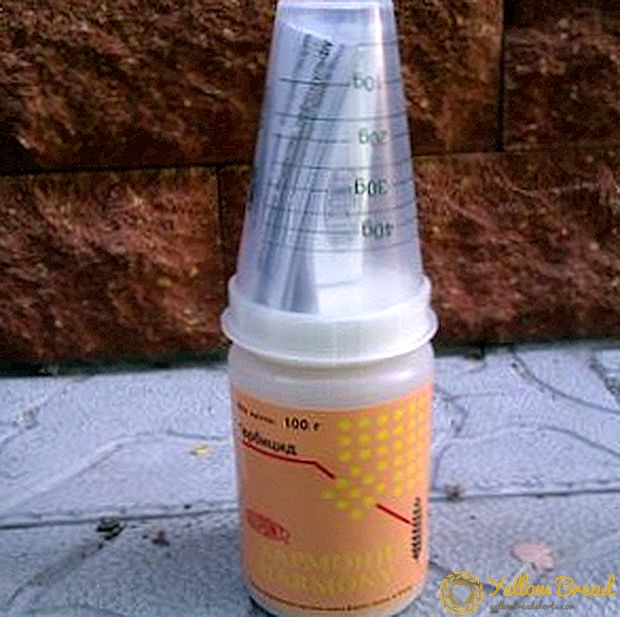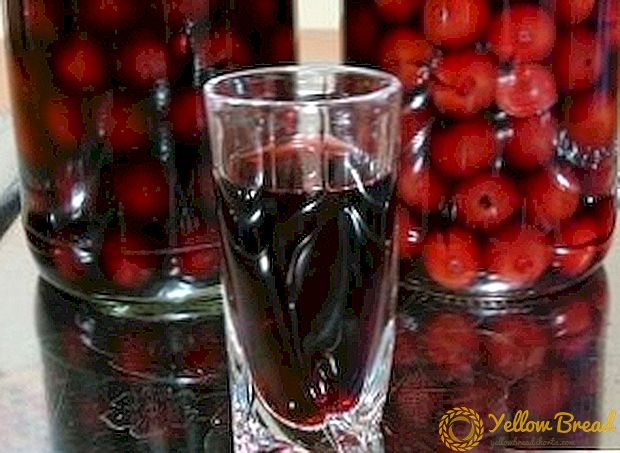 The roots of the aquilegia flower go deep into the Middle Ages - the existence of this plant has been known since the 13th century. He was depicted on his canvases by medieval artists, was sung by poets, there are even mentions in Shakespeare’s “Hamlet”.
The roots of the aquilegia flower go deep into the Middle Ages - the existence of this plant has been known since the 13th century. He was depicted on his canvases by medieval artists, was sung by poets, there are even mentions in Shakespeare’s “Hamlet”.
Aquilegia It belongs to the genus of herbaceous perennials, to the ranunculus family. The Latin name is Aquilegia, but the people call it "catchment", because the calyx of a flower has such a shape that allows you to retain and collect rainwater. Another aquilegia called "Orlik." Different peoples can also find the names "Columbine", "dove", "shoe elf".
- Alpine Aquilegia (Aquilegia alpina)
- Aquilegia bertolonii
- Aquilegia flabellata
- Aquilegia Canadensis (Aquilegia canadensis)
- Aquilegia karelinii
- Aquilegia vulgaris
- Aquilegia Skinner (Aquilégia skínneri)
- Siberian aquilegia (Aquilegia sibirica)
- Dark aquilegia (aquilegia atrata)
- Aquilegia atrovinosa
This plant is very loved by florists. It is also used with great pleasure by landscape designers. Aquilegia is popular all over the world. It can be found in the parks of European countries, in flower gardens of North America and in the gardens of Asia. Such popularity of perennial is due, first of all, beautiful and bright multi-colored flowers.
In addition, the plant retains its attractiveness for a long time - from spring to late autumn. Directly blooming aquilegia can be admired throughout the month - depending on the region of growth, it blooms in spring or summer.
On the number of species of aquilegia, as well as on the origin of its name, among nerds, there is also no one opinion - the number varies from 60 to 120. The ten most common are listed below.
Alpine Aquilegia (Aquilegia alpina)
Motherland alpine aquilegia - Western Europe. This plant is also distributed in the alpine belt of Central Europe. Usually grows on rocks and plain meadows. 
It reaches a height of 30-40 cm. With proper care it can grow twice as high. The flowers at Aquilegia alpina have a rich blue, blue or purple. It blooms in mid or late summer.
Perennial grows well in fertile loamy and sandy soil. But in heavy clay, acidic, saline soils with an excess of moisture, he can not live.
Propagated by this kind of seeds. Sowing is done in spring or autumn. Before planting, it is recommended to fertilize the soil with organic additives. The holes for planting are dug no deeper than 25-30 cm. The distance between the plants must be at least 30 cm.
Sprouts should be expected a couple of weeks after sowing. Reproduction by cuttings and dividing the roots is also possible.
This pest is resistant to pests and diseases, but only with proper planting and decent care. If the rules are violated, the plant can affect diseases such as spotting, rust, powdery mildew, gray mold. Among the pests for this species, aphids, moths, mites and leaf-turners are especially dangerous.
For the prevention of plant diseases, it is important to periodically loosen the soil and remove weeds. Watering should be moderate.
When making landscapes, this type of perennial is used in the creation of stony hills, in the foreground in mixborders and rabatkah.
Aquilegia bertolonii
Blue flowers aquilegia bertoloni in late April - early May, one can often be seen on the slopes of the Southern Alps. The stems of plants of this species reach only 15 cm, so it belongs to the dwarf species. Despite its short stature, the flowers of Aquilegia bertolonii are rather large.
In the decorative garden culture, this type is preferred to be used in the design of rock gardens and container compositions.
Aquilegia flabellata
Akvilegiya fan-like or Akita grows on rocks and mountain tops in the Far East and Northern Japan. He likes to settle by the reservoirs. Usually hardy. 
It has an average height (30-60 cm) and small flower sizes (5-6 cm in diameter). Blooms in late May. The flowers in this species are two-colored - lilac-blue with a white border. Spurs have them strongly bent.
With proper care, you can achieve a larger number of flowers than is typical for this variety - from one to five buds. Duration of flowering is longer than that of other varieties - 2-3 weeks.
Breeding perennial self-seeding. Usually the bushes grow well.
Aquilegia Canadensis (Aquilegia canadensis)
As the name implies, the origin of this species is North America. In European gardens it can be found infrequently. Loves light, sandy soil, loam. 
The flowers of this species have flat spurs and red-yellow color. The stems grow to 60 cm. There are 2-3 flowers on each stem. Blooms in May and June.
Propagated by seeds, cuttings and division of the stem. Possesses high frost resistance. It does not require shelter.
Aquilegia karelinii
This species is named after the Russian botanist Grigori Karelin. The places of its growth are the forests of Central Asia. It can reach a height of 80 cm. The flowers are purple or dark red, the leaves are saturated green.The spurs are strongly curved in them, which makes the bud look like a shoe. 
Aquilegia vulgaris
If you are still not well versed in the peculiarities of this perennial, then it will be quite difficult to distinguish Aquilegia vulgaris from the above described species. The fact is that before these two flowers were in the same species.
Nevertheless, the catchment of ordinary has its own characteristics. This European species can grow from 40 to 60 cm. Aquilegia flowers are terry, small - up to 5 cm in diameter, of different colors: dark red, purple, blue, yellow, pink, white. Although it can also be non-curved, with spurs and without spurs. Bloom from May to July.
The plant is very resistant to cold, can withstand temperatures up to -35 ºС.
Aquilegia Skinner (Aquilégia skínneri)
Habitat Aquilégia skínneri - North America and Mexico, so this species is able to tolerate low temperatures well. It grows up to 80 cm. 
The buds in this specimen are very beautiful, two-colored: sepals - yellow-orange, spur - red. The flowers are small, up to 4 cm in diameter. Bloom in late summer, bloom lasts 25-30 days.
In contrast to other species, it prefers dry soils. Terry forms of this catchment are used in rock gardens and mixborders, on rabatkah, as well as in bouquets.
Siberian aquilegia (Aquilegia sibirica)
It lives in Western and Eastern Siberia. It is found in Central Asia and Mongolia. The height of this aquilegia is up to 70 cm. 
The flowers are medium, with a thin spur, purple, rarely white. Flowering begins at the end of May. Shrubs grow widely, bloom profusely, leaves are reddish-green. The species is resistant to high temperatures.
Dark aquilegia (aquilegia atrata)
Originally from the Alps and the Apennines, this species grows on rocks and meadows at an altitude of 2,000 meters above sea level. Reaches a maximum height of 60 cm. Loves sandy, clay soils. In drought, watering is necessary. 
Notable for small dark purple and dark blue flowers. Buds are small, up to 4 cm in diameter.Spur them short and curved inside. It blooms in late spring - in June. The leaves become bluish tint.
This low aquilegia is cultivated for the design of rock gardens, mixed flower beds and bouquets. Despite the good frost resistance, in winter it requires shelter for winter.
Aquilegia atrovinosa
Aquilegia atrovinosa well known to the Chinese and Kazakhs. It is there that this species is most common. The plant is of medium height. The flowers are dark red and dark purple. Sepals temnozhilkovye, diverging. In culture, this species is very rare. 
As you can see, all types of watershed are beautiful in their own way, attract attention, and make any park and garden unique. However, when choosing species copies of aquilegia for planting, we advise you to responsibly approach to the purchase of seeds. It is better to purchase them in nurseries, as very often seeds of dubious origin are marketed.


